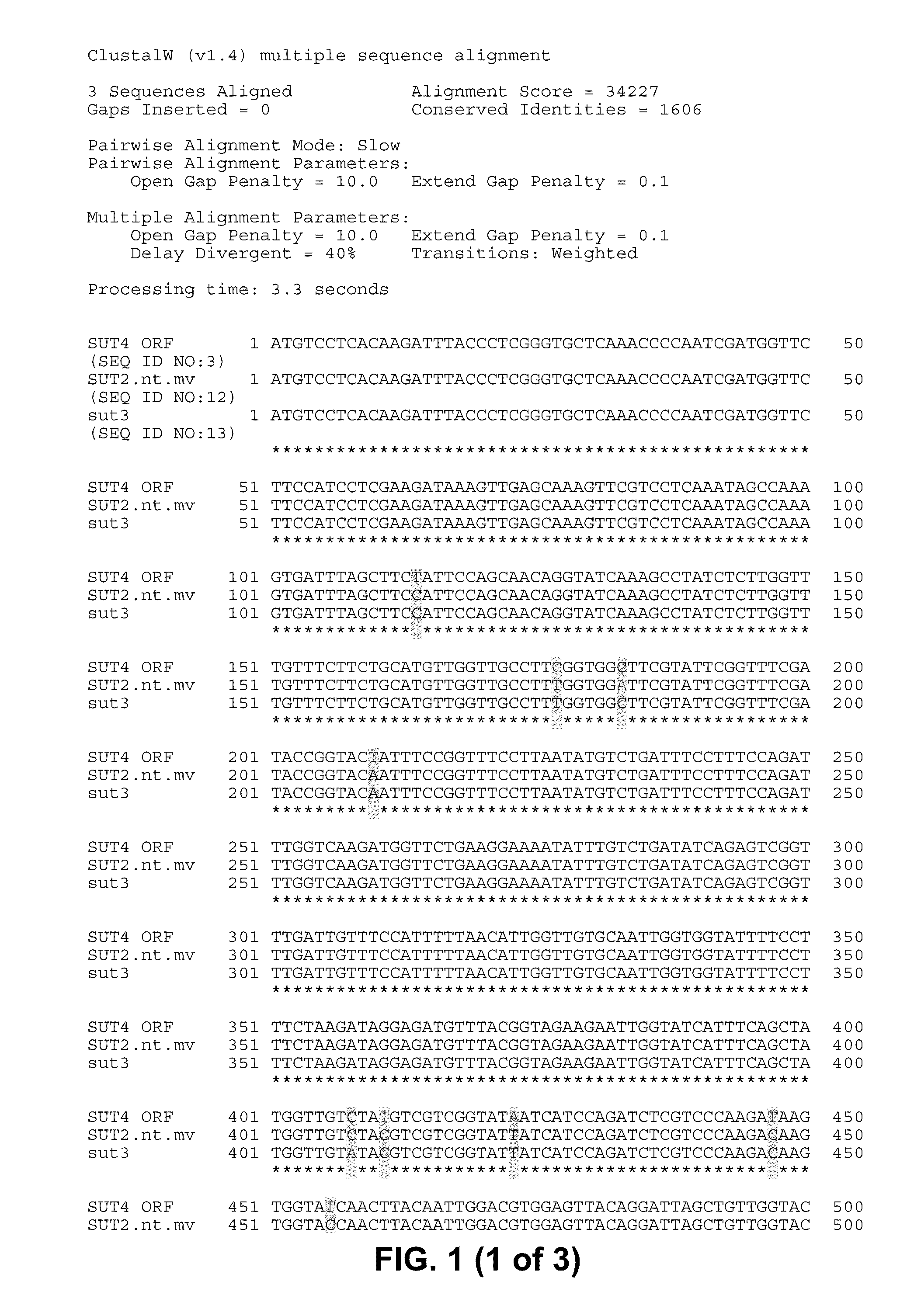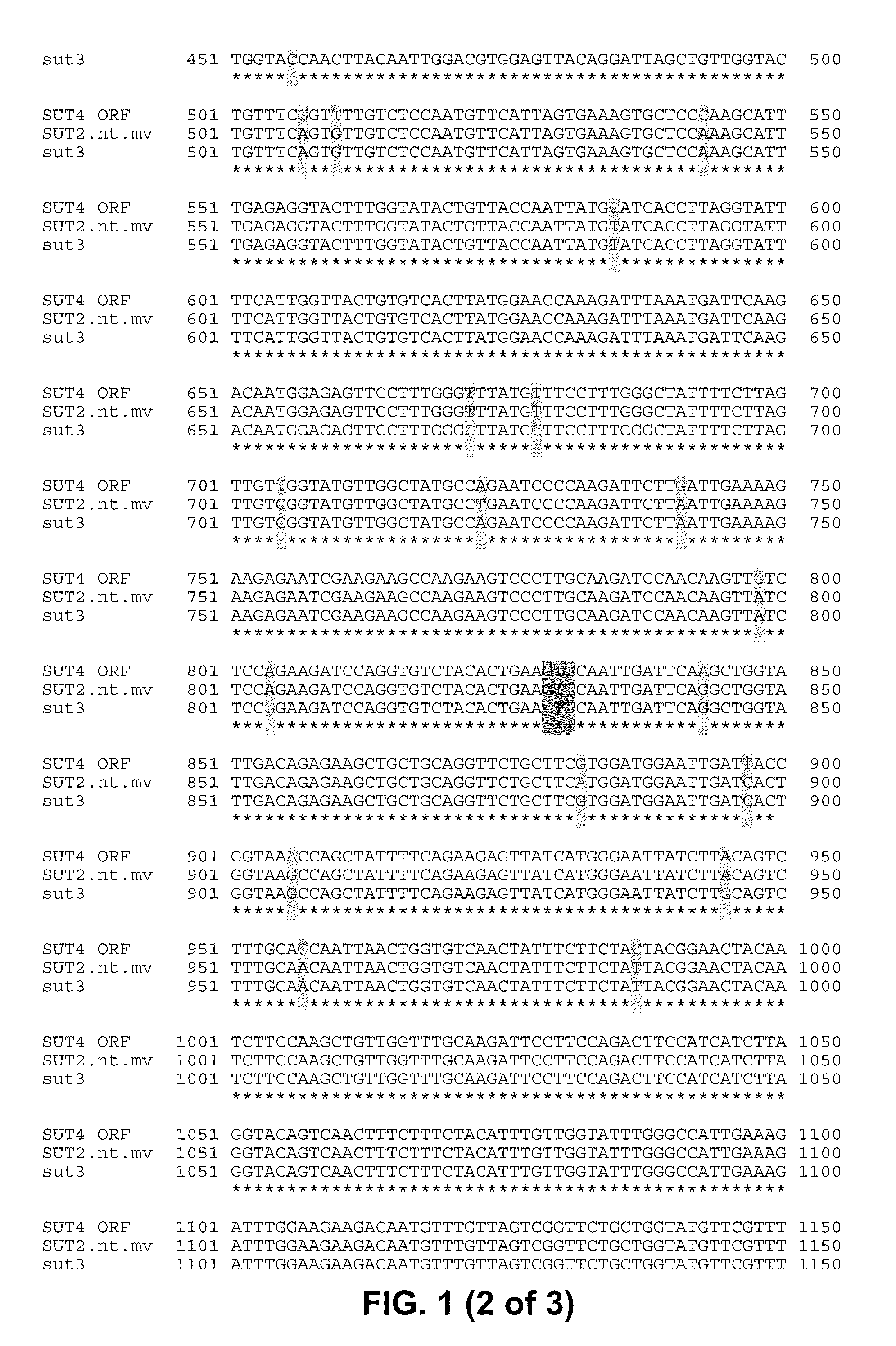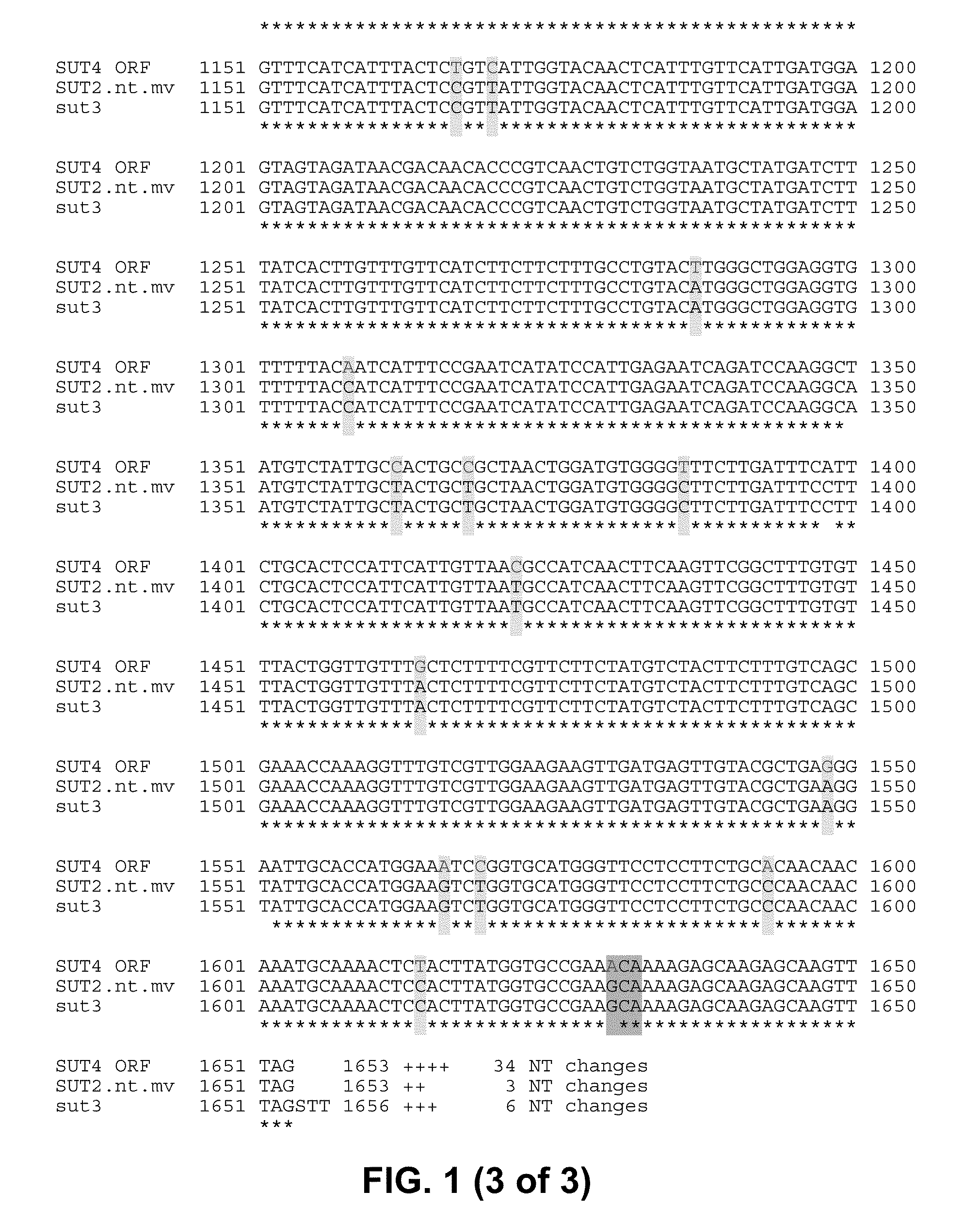Sugar transport sequences, yeast strains having improved sugar uptake, and methods of use
a technology of sugar transport sequences and yeast strains, which is applied in the direction of biofuels, organic chemistry, peptides, etc., can solve the problems of increasing food costs, production is not economically sustainable, and the level of ethanol produced remains too low to make the use of these bacteria in large-scale ethanol production economically feasibl
- Summary
- Abstract
- Description
- Claims
- Application Information
AI Technical Summary
Benefits of technology
Problems solved by technology
Method used
Image
Examples
examples
Characterization of Putative Xylose Transporters of Pichia stipitis
[0048]Yeast strains, plasmids, and growth conditions. The yeast strains and the plasmids used in this study are listed in Table 1. S. cerevisiae EBY.VW4000 strain (MATa Δhxt1-17 Δgal2 Δstl1 Δagt1 Δmph2 Δmph3 leu2-3,112 ura3-52 trp1-289 his3-Δ1 MAL2-8c SUC2) (9) was kindly provided by E. Boles at Heinrich-Heine-Universitat and was used for transformation of all the constructed plasmids. Three xylose transporter candidates, XUT1, XUT1 partial (corresponding to the sequence encoding the C-terminal region of the protein beginning with amino acid residue 154 of SEQ ID NO:2), and SUT4, were amplified and fused with the TDH3 promoter by PCR. The coding sequence of SUT4 includes a CUG codon, which in P. stipitis, specifies the serine residue of amino residue 410 of SEQ ID NO:4. This codon, which in most organisms specifies a leucine, was modified for expression in S. cerevisiae using standard methods so as to specify a seri...
PUM
| Property | Measurement | Unit |
|---|---|---|
| density | aaaaa | aaaaa |
| concentration | aaaaa | aaaaa |
| concentration | aaaaa | aaaaa |
Abstract
Description
Claims
Application Information
 Login to View More
Login to View More - R&D
- Intellectual Property
- Life Sciences
- Materials
- Tech Scout
- Unparalleled Data Quality
- Higher Quality Content
- 60% Fewer Hallucinations
Browse by: Latest US Patents, China's latest patents, Technical Efficacy Thesaurus, Application Domain, Technology Topic, Popular Technical Reports.
© 2025 PatSnap. All rights reserved.Legal|Privacy policy|Modern Slavery Act Transparency Statement|Sitemap|About US| Contact US: help@patsnap.com



